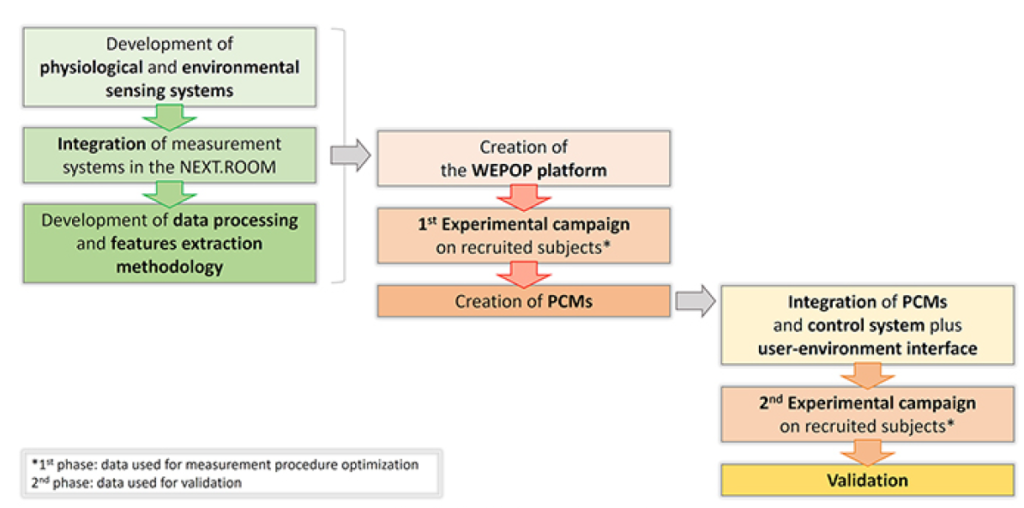Brief description of the project
New approaches for indoor environmental comfort measurement, modelling and control have been recently conceptualised to overcome the well-known limitations of the current methods. Personal comfort is definitely the most promising one, aiming at catching the problem of subjectivity. The fusion of physiological, environmental and personal data can feed the creation of new prediction models significantly improving the capacity of monitoring the real comfort perceived by the occupants to trigger an optimised response of HVAC and lighting systems. The recent progress in terms of wearable devices, IoT sensors and artificial intelligence (AI) fostered a growing number of research activities to demonstrate the feasibility of personal comfort models (PCMs) starting from the combination of physiological and environmental sensors and AI technologies. However, most of the research has been performed on a limited sample population, considering a single domain at a time (thermal or visual) and under strictly controlled conditions, not reflecting real-life context. The demonstration of such lack is that no application in real-life has been
released yet, whereas the difficulties of transferring theoretical models into practice are widely discussed in the literature of multidomain approaches to environmental comfort. There is a strong need to provide proof of evidence that PCMs can improve both human indoor comfort and energy efficiency in buildings. To these aims, there are still some technical barriers to overcome: i) wearable sensors uncertainty, which is high because of artefacts and other disturbs; ii) the cross-related effects of environmental and psychological stimuli, which are partially unknown, leading to badly conditioned controls; iii) predictive models based on quite limited numbers of subjects so that the intra- and inter-subject diversities are marginally investigated. WEPOP will develop a new edge computing platform for real-time personal comfort measurement and control, by exploiting the experience created in the NEXT.COM project in the field of multidomain comfort measurement and modelling. The platform will include both physiological and environmental sensors, combined with an edge computing unit for the realisation and fine-tuning of PCMs, exploitable for control purposes, thus optimising both the occupants’ comfort level and the building energy efficiency. This will lead to the enhancement of subjects’ comfort (dissatisfied reduction >5%) and to the optimisation of energy consumption (-10%, at least).
The project is organised into 6 Work Packages, conducted by 4 Research Units with cross-disciplinary expertise, for the development of physiological and environmental sensors and measurement procedures, data analysis and modelling algorithms, advanced operation and control of building technical systems integrated with BIM and energy models for environmental sustainability and human well-being in the built environment.

Fig. 1 WEPOP methodology
Workplan
WP1 Project Management (Leader: ECAMPUS)
WP2 Physiological sensing system (Leader: UNIPA)
WP3 Environmental sensing system (Leader: UNIVPM)
WP4 PCM Platform (Leader: ECAMPUS)
WP5 Platform validation and control system interface (Leader: UNIPG)
WP6 Dissemination and exploitation (Leader: UNIVPM)
